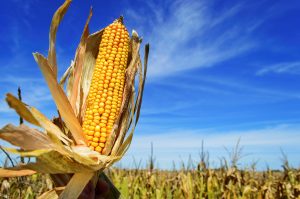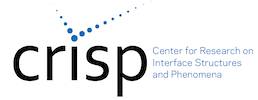Our kits are currently being reviewed and updated by a team of collaborative, innovative and interdisciplinary educators who wish to enhance the educational opportunities for students. These dedicated teachers are members of CRISP Collaborative Science for All (CCSA) as well as local educators.
Click to see the SCSU CRISP Module Template used by CCSA for improving and updating the CRISP demos and kits. Each kit page offers a CRISP developed teacher module and CRISP aligned standards (both NGSS and CCSS)
Kit Request form

Synthetic biology may provide solutions to problems in areas such as food security, healthcare, energy, and the environment. It may seem surprising to think about foods as technologies, but since the beginning of agriculture, people have been modifying plants and animals to make better-tasting, more nutritious, and more resilient foods
Adapted from Building with Biology Toolkits originally created for NISEnet via the Building with Biology project
This material is based upon work supported by the National Science Foundation under Grant Number DRL 1421179. Any opinions, findings, and conclusions expressed in this material are those of the authors and do not necessarily reflect the views of the National Science Foundation.
Subject(s):
Biotechnology, Synthetic Biology, Technology and Society
Objectives:
- Synthetic biologists solve problems by applying engineering principles to living materials.
- We all have a role in shaping the development and use of new technologies.
- Synthetic biology may provide solutions to problems in areas such as food security, healthcare, energy, and the environment
Materials in this kit:
- Activity and facilitator guides
- Activity sign and holder
- Playing cards (shaped like foods)
- Red, orange, and green plates
- Red, orange, and green plate labels
- Place card holders (3)
- Reference sheets: Traditional Agricultural Breeding, Genetic Engineering, and Synthetic Biology
Suggestions for the Teacher:
Things to discuss:
- Why would you be comfortable eating some of these foods? What made you feel cautious about others?
- What kinds of problems are researchers trying to solve with these engineered foods? What do you like or dislike about their solutions? Can you think of different solutions?
Safety:
Additional Resources:
Bio Bistro Teacher Module
Bio Bistro CRISP aligned standards
BwB Bio Bistro Cards and Labels from NISEnet
BwB Activity Guide from NISEnet
Genetic Engineering Reference
Traditional Agricultural Breeding Reference
Synthetic Biology Reference
STEM Careers:
Agricultural and/or Food Scientist
Bio-engineer
Geneticist
Quality Control/Quality Assurance Technician
Research Scientist
Synthetic Biologist
Standards:
MS-LS1-2: From Molecules to Organisms: Structures and Processes
- Develop and use a model to describe the function of a cell as a whole and ways parts of cells contribute to the function.
- Construct a scientific explanation based on evidence for how environmental and genetic factors influence the growth of organisms.
HS-LS1-2. From Molecules to Organisms: Structures and Processes
- Develop and use a model to illustrate the hierarchical organization of interacting systems that provide specific functions within multicellular organisms.
- Construct an explanation based on evidence for how the structure of DNA determines the structure of proteins which carry out the essential functions of life through systems of specialized cells.
MS - LS1.A: Structure and Function
- Within cells, special structures are responsible for particular functions, and the cell membrane forms the boundary that controls what enters and leaves the cell.
HS - LS1.A: Structure and Function
- Multicellular organisms have a hierarchical structural organization, in which any one system is made up of numerous parts and is itself a component of the next level.
CC 6 - Structure and Function
- Investigating or designing new systems or structures requires a detailed examination of the properties of different materials, the structures of different components, and connections of components to reveal its function and/or solve a problem.
Interdependence of Science, Engineering, and Technology
- Engineering advances have led to important discoveries in virtually every field of science, and scientific discoveries have led to the development of entire industries and engineered systems.
SEP 2 - Developing and Using Models
- Develop and use a model to describe phenomena.
SEP 5 - Constructing explanations (for science) and designing solutions (for engineering)
- Construct an explanation based on valid and reliable evidence obtained from a variety of sources (including students’ own investigations, models, theories, simulations, peer review) and the assumption that theories and laws that describe the natural world operate today as they did in the past and will continue to do so in the future.
